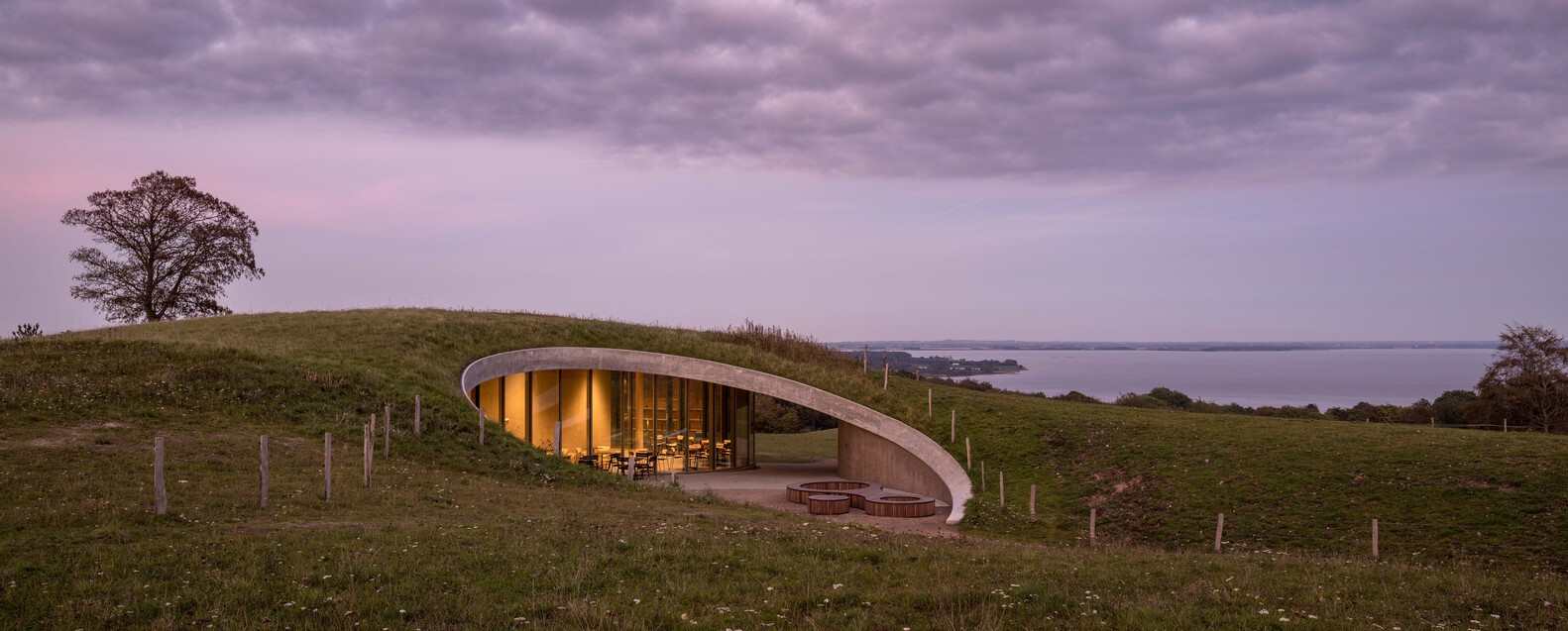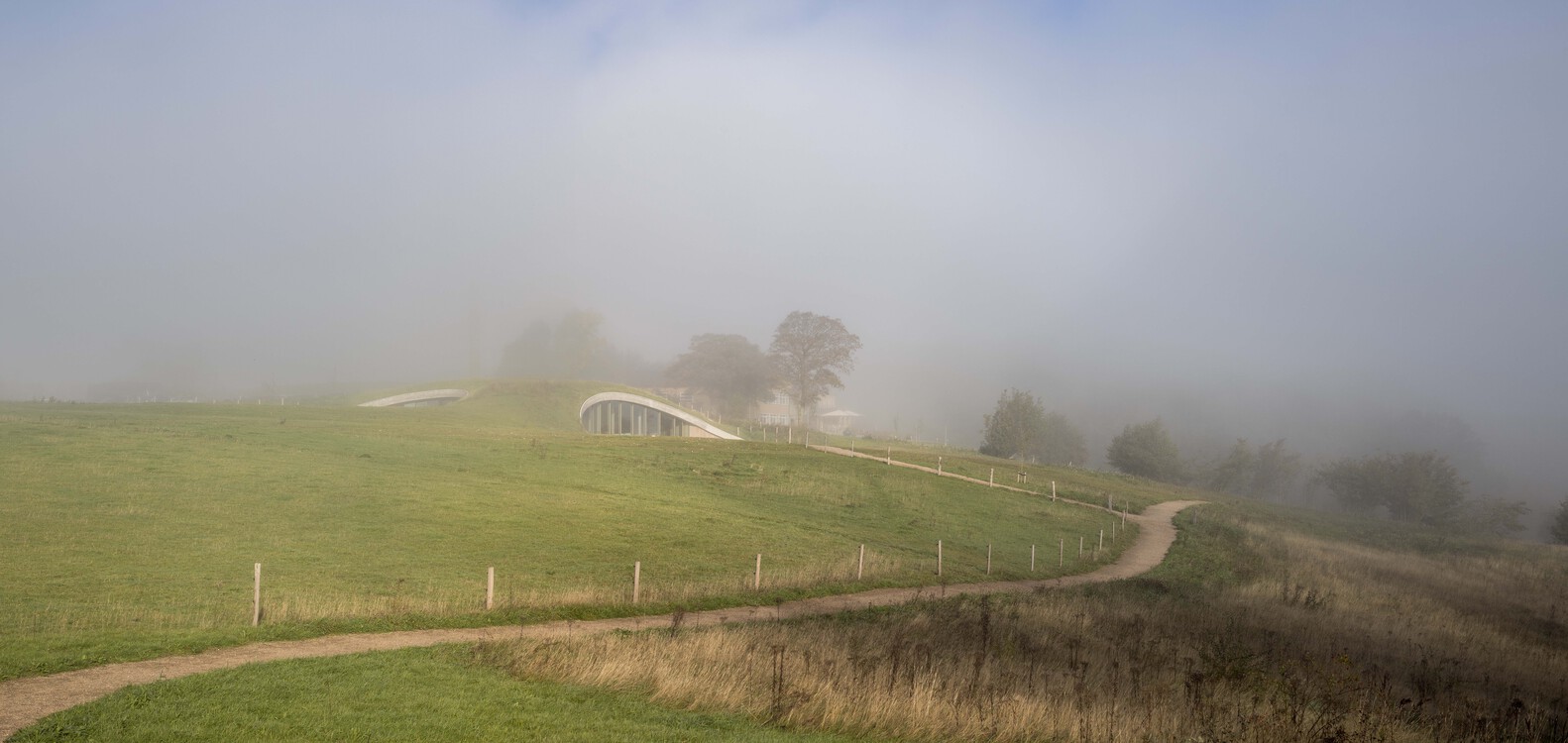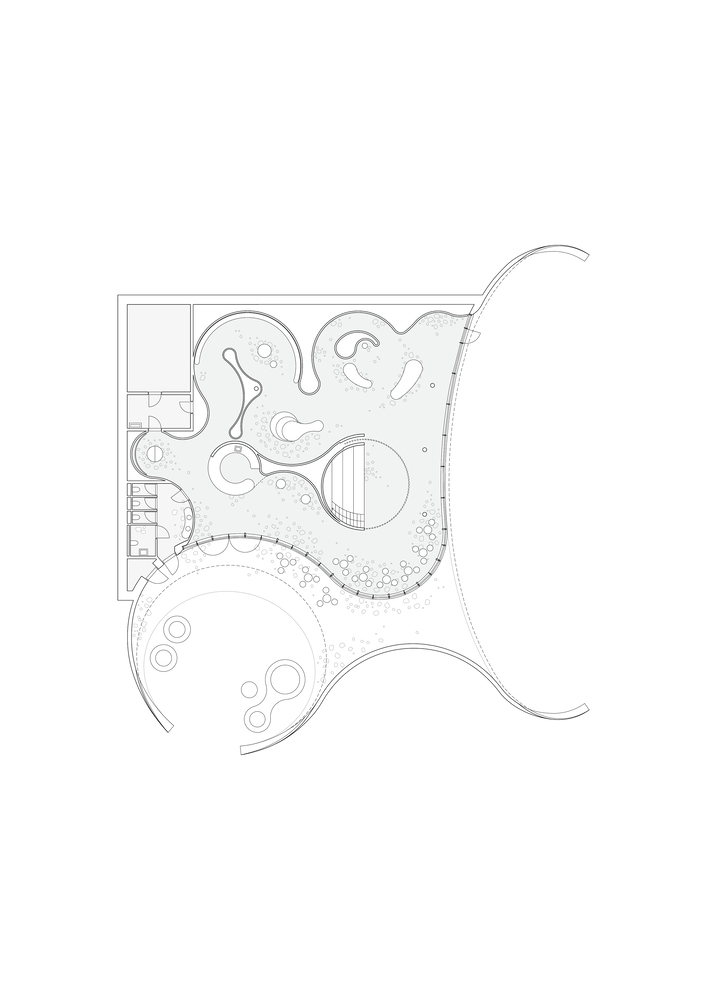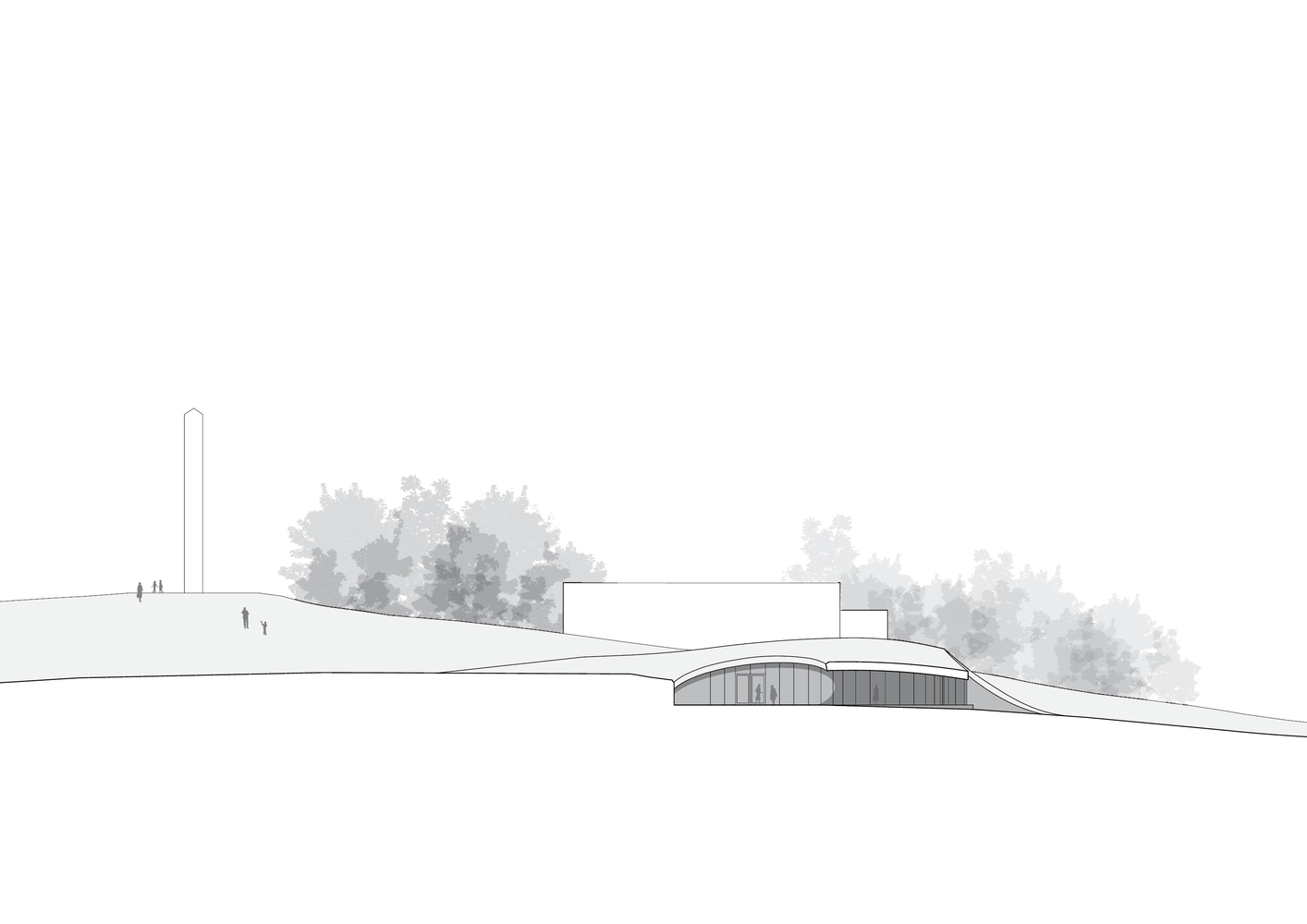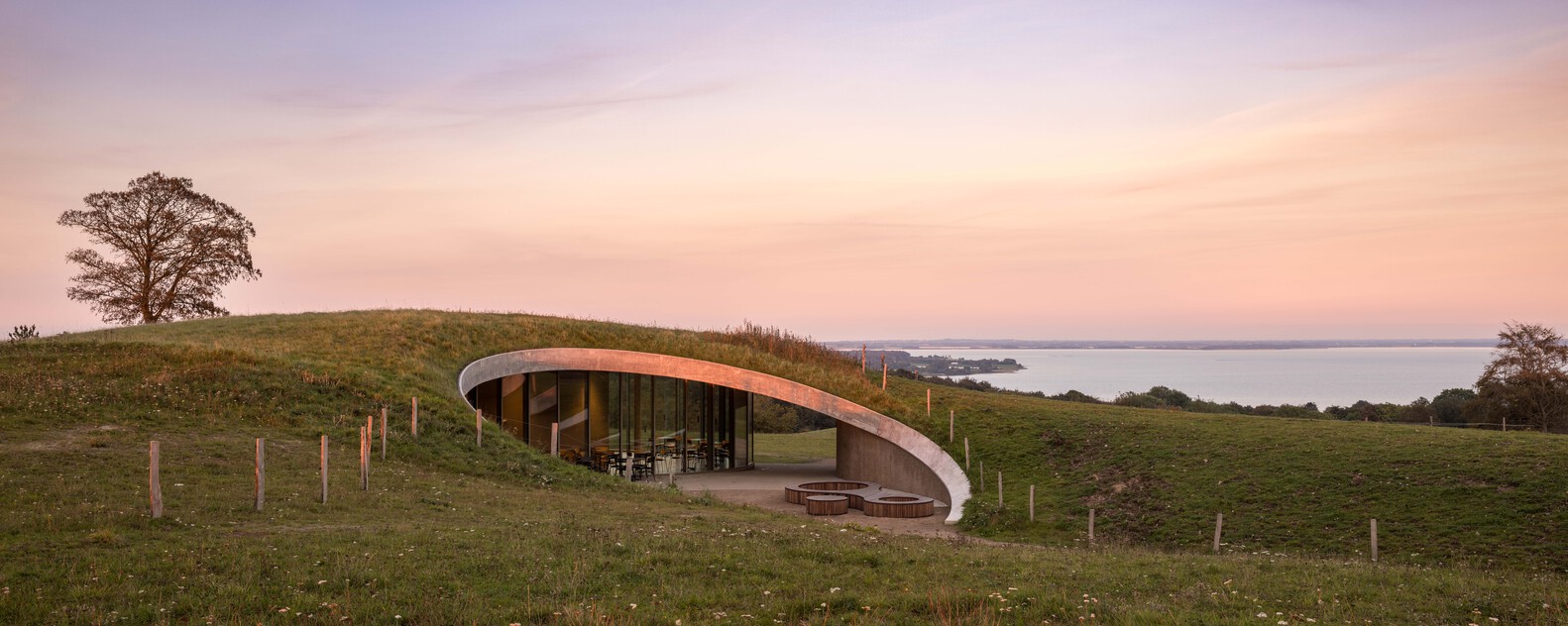
Skamlingsbanken Visitor Center / CEBRA
Skamlingsbanken in southern Denmark holds a special place in recent Danish history. It has acted as cultural gathering point for the people in the wake of radical political and societal changes, forming a natural stage for the voices of advocates for the Danish language, front-runners of the feminist movement or the celebration of the ending of WWII. The site is located at the highest point of an undulating moraine landscape with spectacular views over the Little Belt strait. CEBRA’s new visitor centre functions as an architectural gateway to Skamlingsbanken’s history and nature that aims at re-establishing this unique historic spot and distinctive landscape as a popular public meeting place.
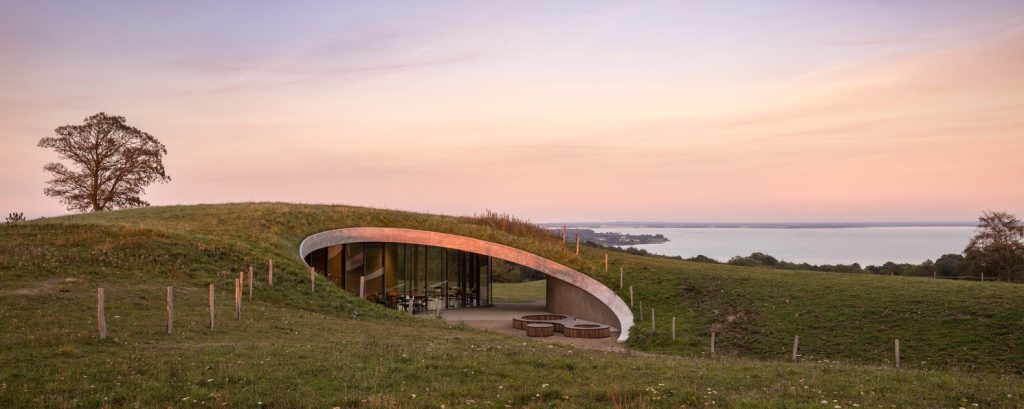
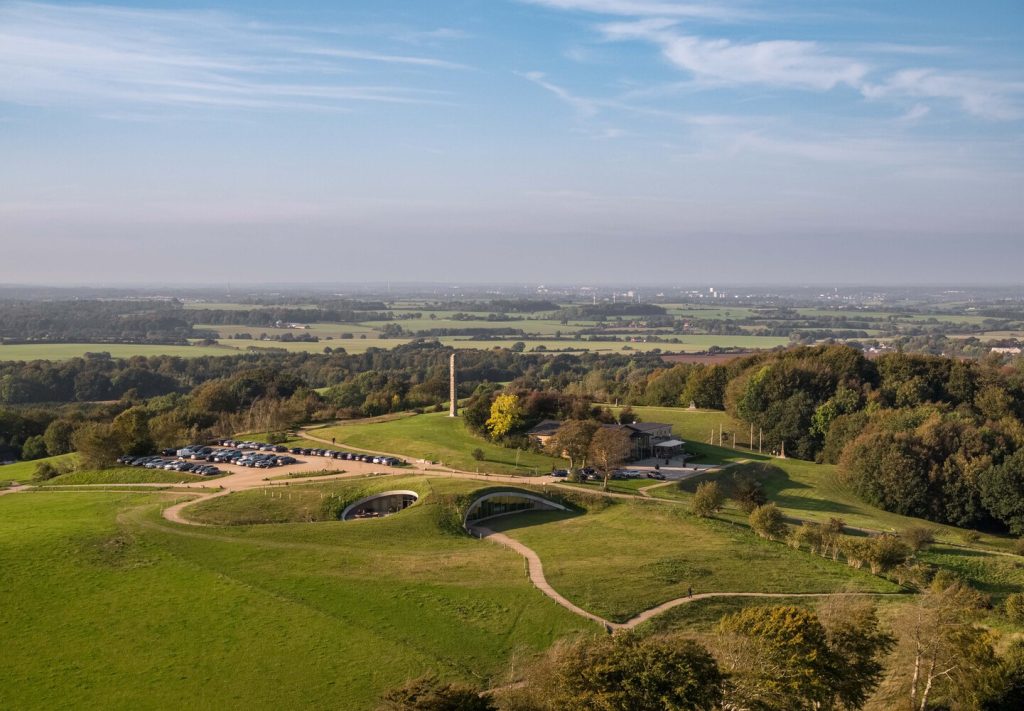
Skamlingsbanken’s landscape was created during the last ice age and offers a rich and varied nature characterized by rolling hills and large meadows, and the scenic context has been the main inspiration for the design of the visitor centre. By elevating the landscape along two circular cuts, the exhibition space becomes a subtle insertion in the landscape in the form of a softly curved hill. Carsten Primdahl, partner and architect at CEBRA comments: “Skamlingsbanken connects the past with the present and the future, and one of the project’s main ambitions has been to actualize the place’s remarkable history and nature into a contemporary context. the new visitor centre is a modern arena for democratic culture and recreates skamlingsbanken as a setting for important debates and education about the things that concern us, for example, climate change”.
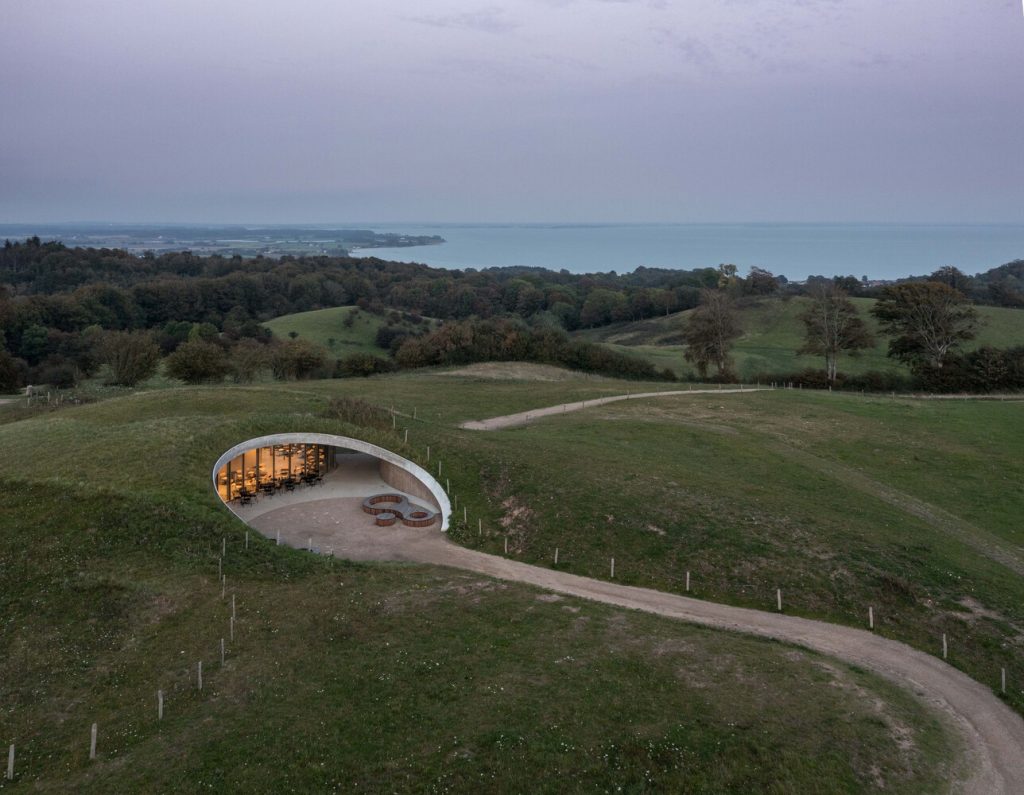
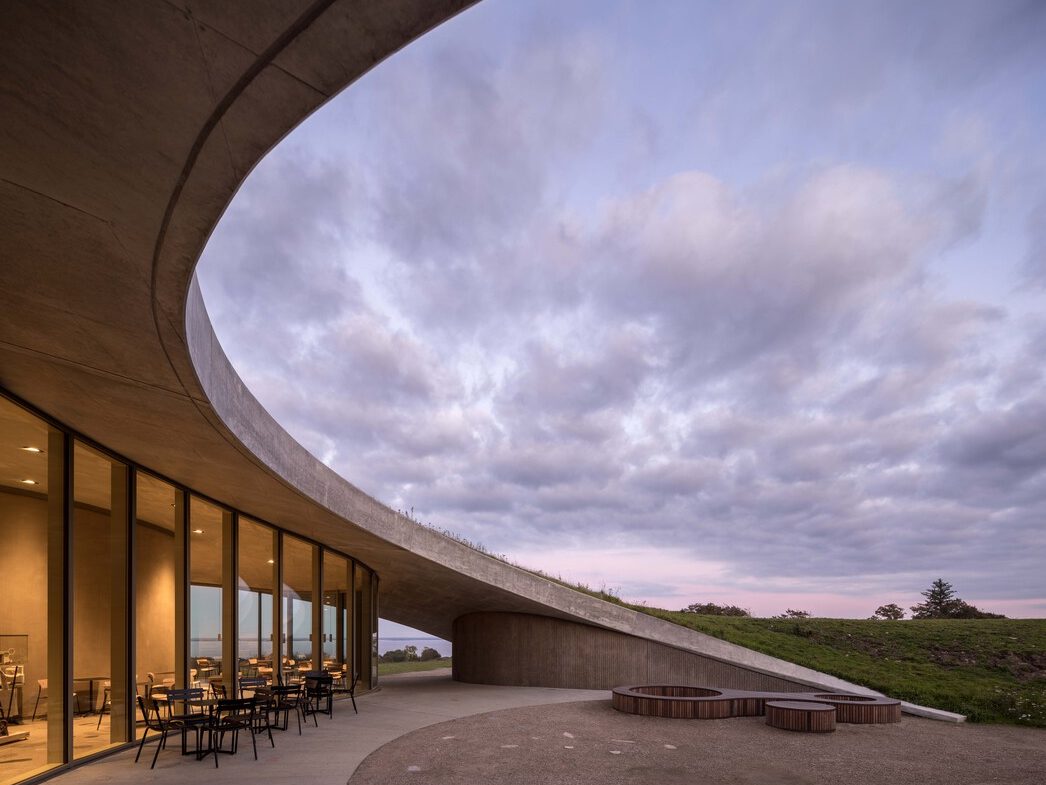
The main attraction at Skamlingsbanken is nature itself. When visitors enter the exhibition space, they will experience moving through hill and its many hidden stories. The corrugated back wall is plastered with clay, and the rest of the interior is characterized by local materials like wood, terrazzo with fieldstones and, calm, earthy colour tones. The introvert and dimmed exhibition space culminates with a spectacular panoramic view towards the Little Belt Strait.
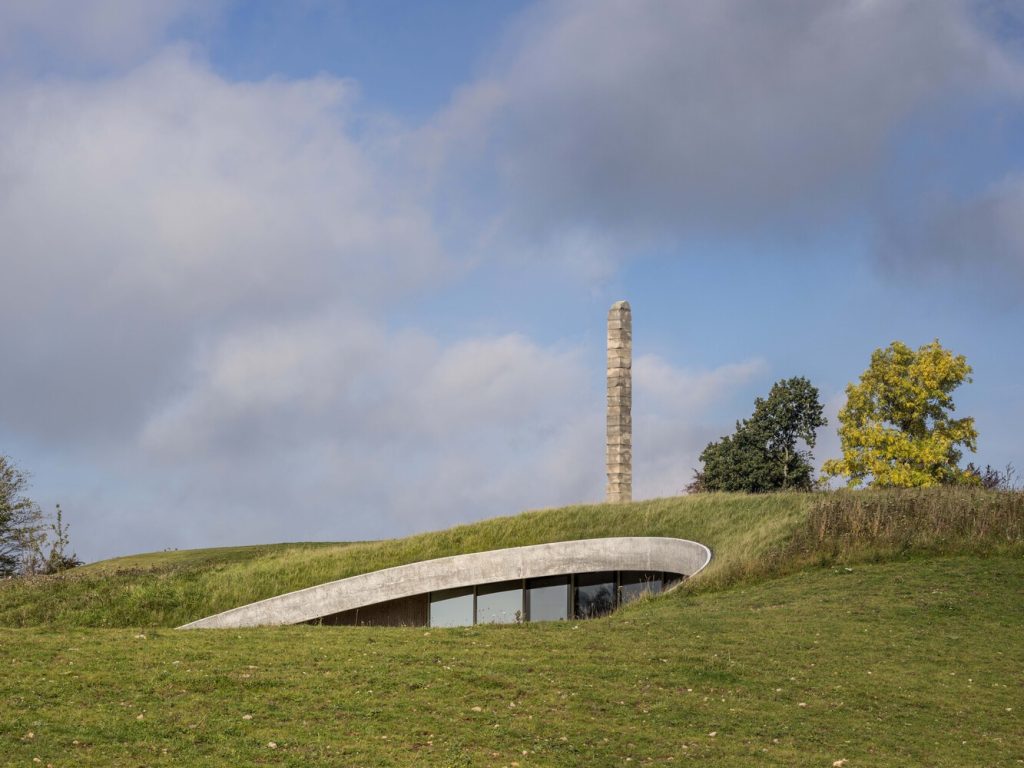
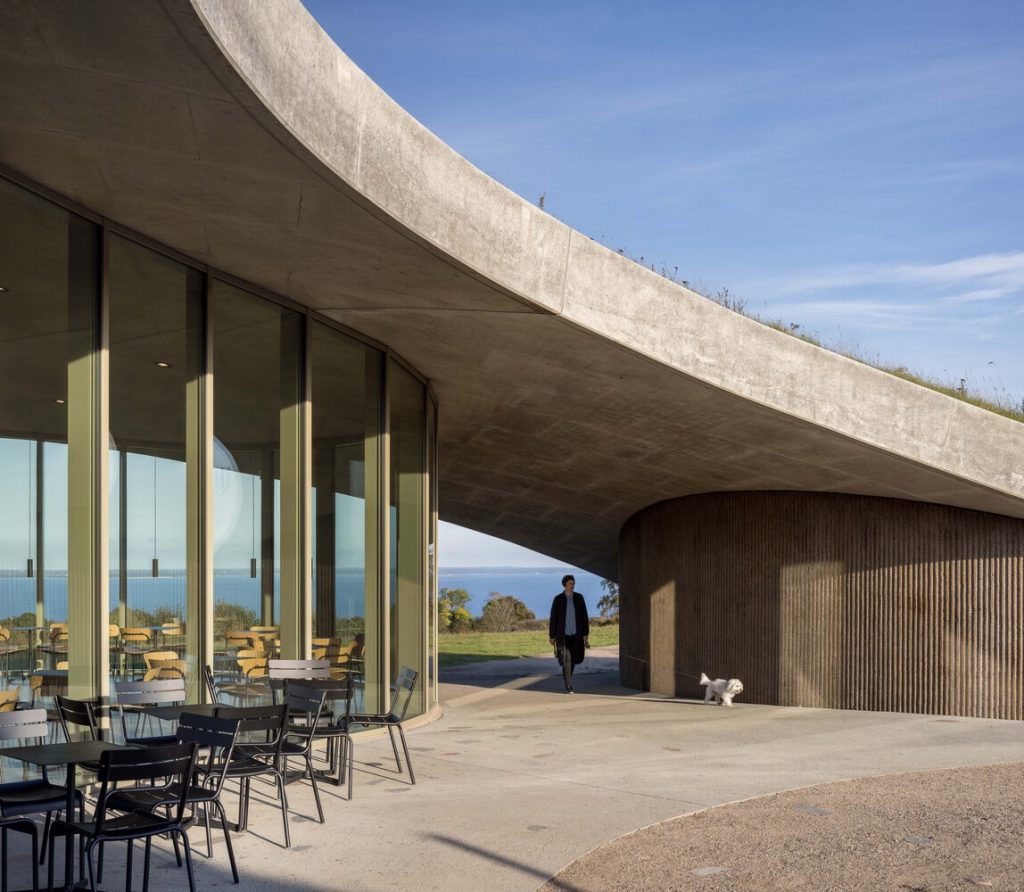
The visitor centre is an architectural interpretation of the glacial landscape. It is not a destination itself, but part of an overall narrative. The building is a portal – to the significant history and the local nature – and forms a natural starting point for hikes in the area, where a network of paths flows through the building and landscape. From here visitors are guided into the landscape or inside the centre to the exhibition, the teaching facilities, or the café. The visitor centre today serves as a location for different events and houses an exhibition about Skamlingsbanken’s history: About nature, democracy, and the power of speech.
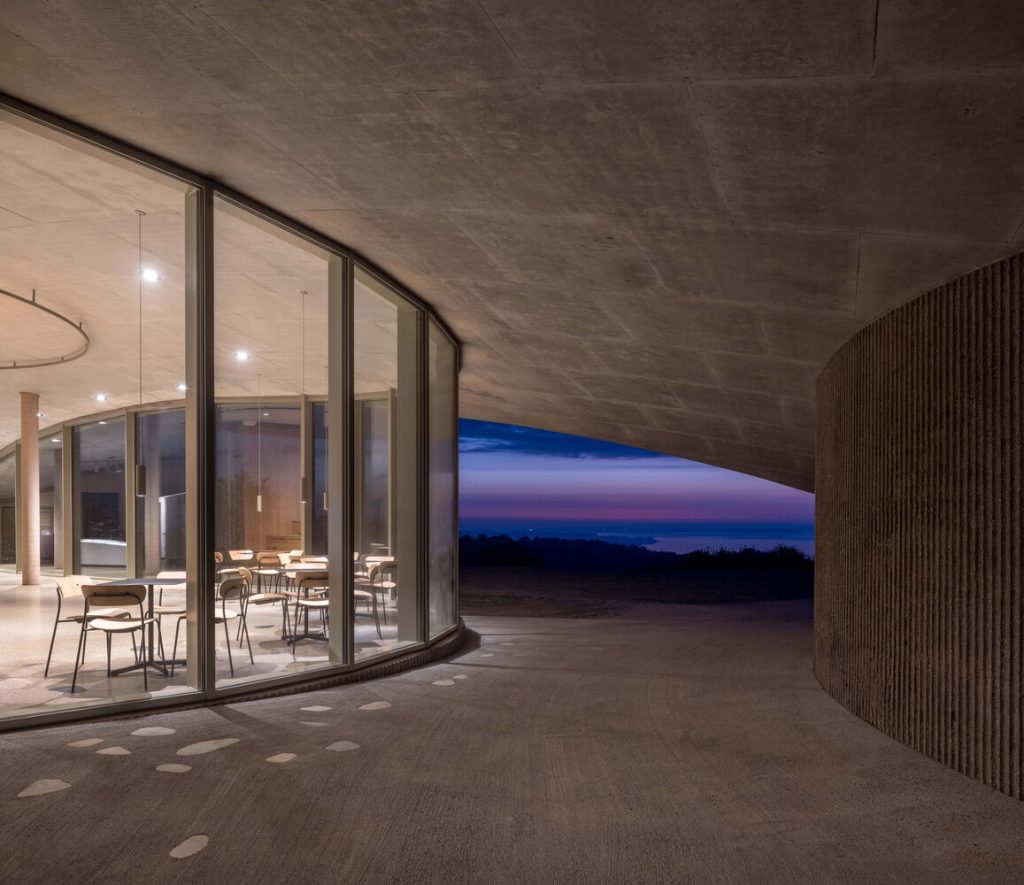
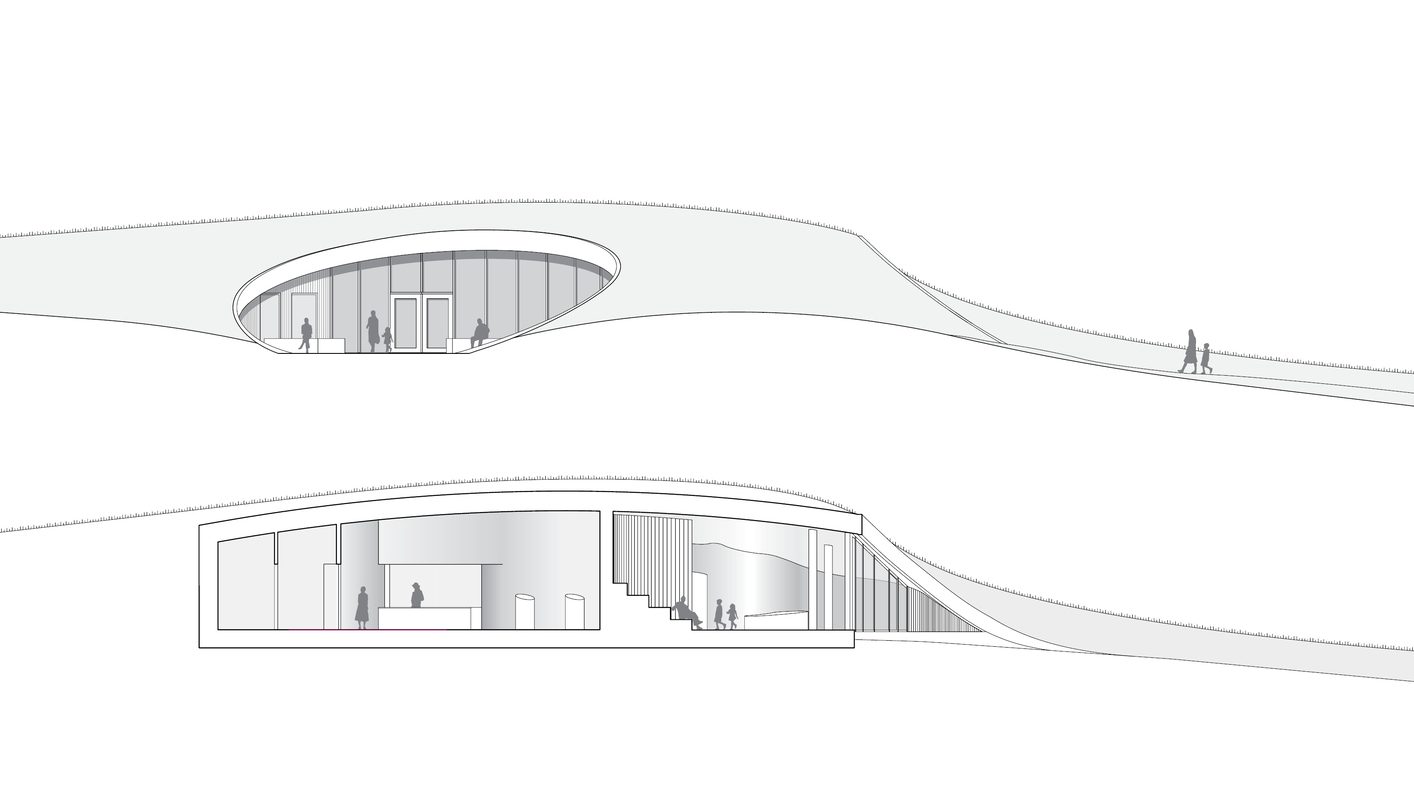
The new visitor centre has been built in a protected area, and the landscape and biological values have been important focal points in the project. In close collaboration with the clients, foundations, landowners and the Danish Society for Nature Conservation, the project team succeeded in expanding the protected area around the visitor centre from 35 hectares to 128. Several native species are rare, and during the development of the visitor centre, it has been crucial to protect the site’s flora and fauna. In collaboration with a biologist from Kolding Municipality, a special grass mixture based on local species was developed and spread on and around the building. The mixture provides optimal conditions for the local herbs, and together with the reuse of natural peat from the building site, the project thus supports the continued development of the unique local nature and biodiversity.
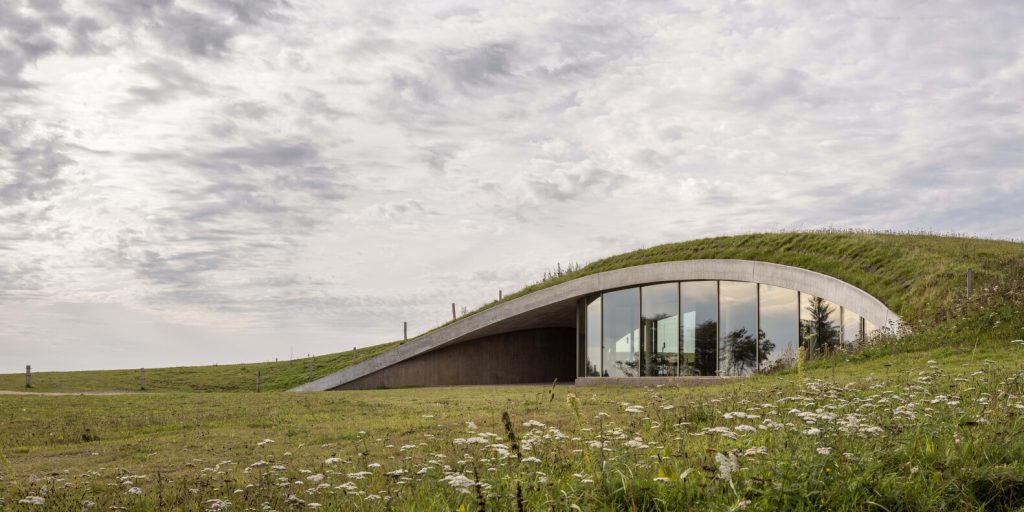
The project is realised with a donation from the Danish AP Møller Fonden.
- Exhibition Designer: Yoke
- Exhibition Concept: 2+1 Idebureau
- Engineer: DRIAS, Dansk Energimanagement & Esbensen
- Landscape Architect: Opland
